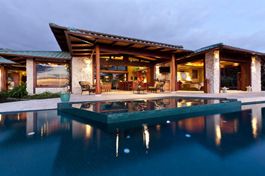 For the past three years, the average size of new homes has been on the rise. The median new-home size in 2012 reached a record high at 2,306 square feet, according to newly released data from the Census Bureau. That is an 8 percent increase from 2009.
For the past three years, the average size of new homes has been on the rise. The median new-home size in 2012 reached a record high at 2,306 square feet, according to newly released data from the Census Bureau. That is an 8 percent increase from 2009.
During the Great Recession, Americans showed a preference for smaller homes, and many housing experts were saying it meant the end of the McMansion.
But Jeffry Roos, a regional president for homebuilder Lennar, told CNNMoney that it wasn’t that Americans wanted less space, they just couldn’t afford more space at the time.
Now, they’re upsizing again. A spokeswoman for GL Homes says that the builder has been selling homes that average 7 percent larger than during the first five months of 2012.
Some consumers are choosing to buy larger because they have more people under their roof. Lennar offers homes known as Next Gen, which feature separate suites for a mother-in-law or college grad who has moved back home.
Home shoppers tend to buy bigger than what they originally plan, Fred Cooper, a spokesman for Toll Brothers, told CNNMoney.
“In the downturns, in upturns, whenever, our customers typically added another 18 to 20 percent of floor space onto what already was a very nice house to begin with,” Cooper says.
Source: “McMansions are making a comeback,” CNNMoney









